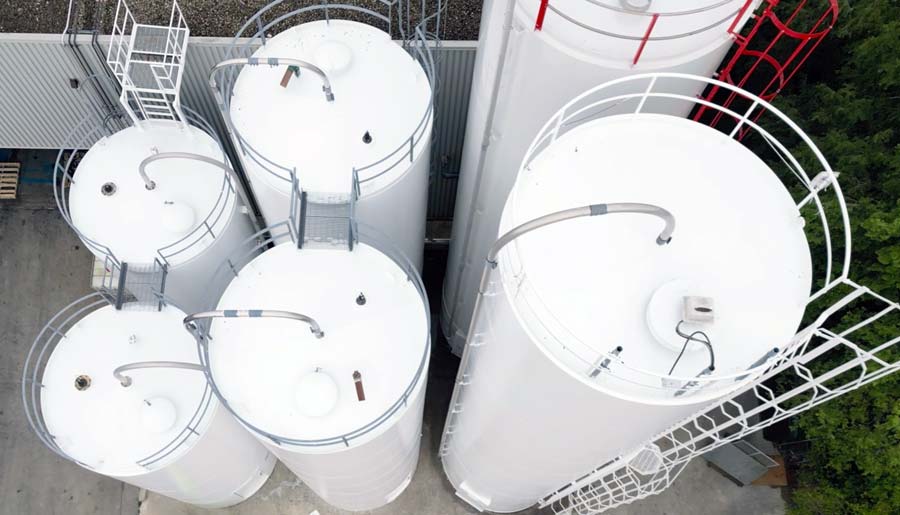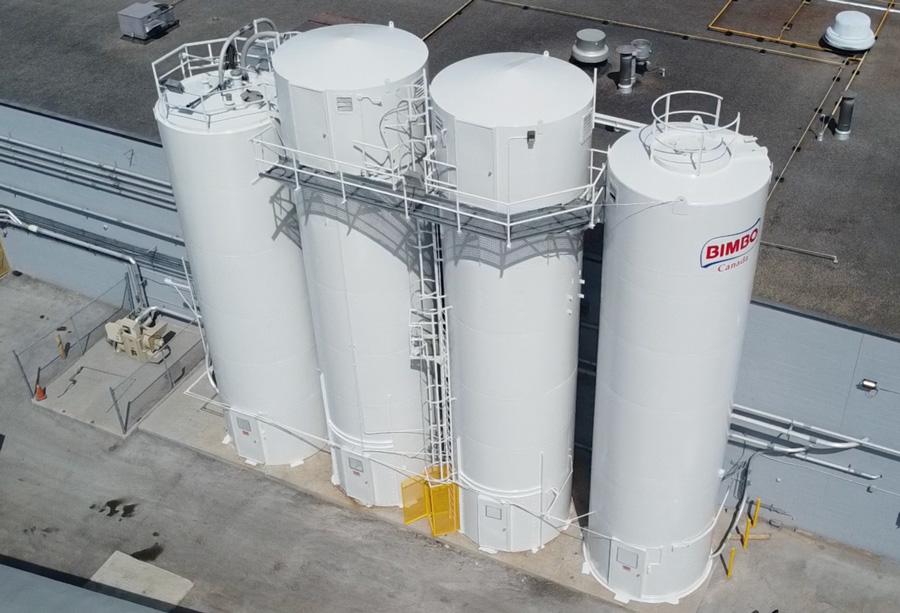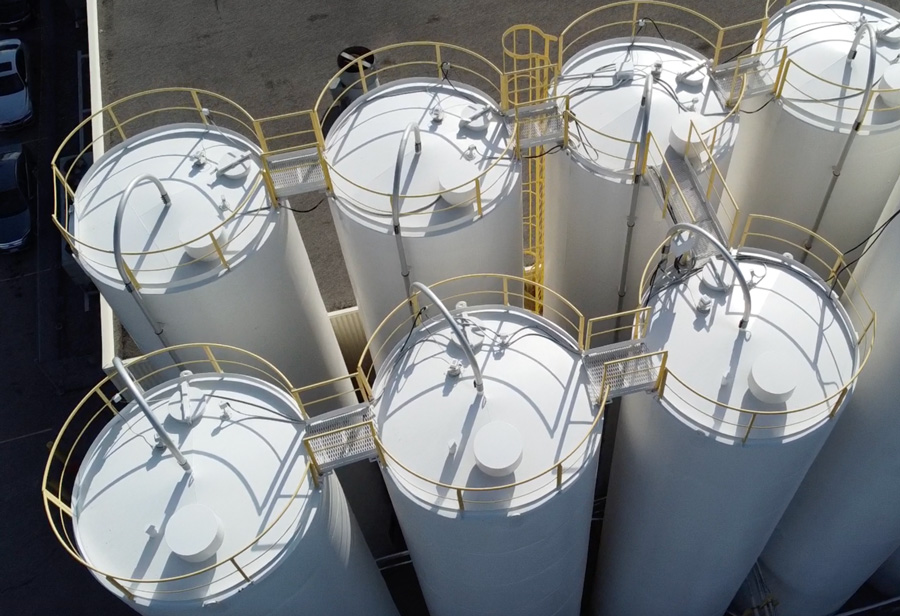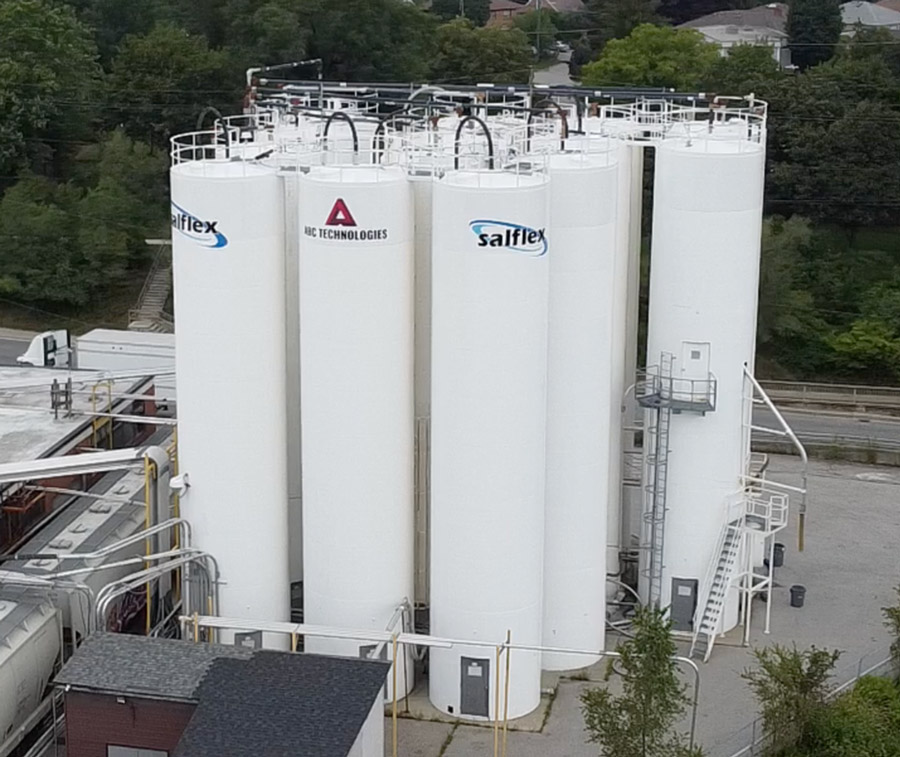Silo Painting
Toronto Silo Painters
B.E.S.T.’s highly skilled team members provide Surface Preparation and Protective Coatings for Steel Silos, which are critical maintenance processes, whether they are used for storing liquids, gases, or dry materials. These processes are essential for several reasons:

1. Corrosion Prevention: Silos are often exposed to harsh environmental conditions, such as moisture, chemicals, and temperature fluctuations.
Corrosion can severely compromise the structural integrity of these structures, leading to leaks and other safety hazards. Protective coatings act as a barrier, preventing the substrate from coming into direct contact with corrosive elements, thereby reducing the risk of corrosion.
2. Longevity: Application of Protective Coatings extends the lifespan of silos by protecting them from wear and tear.
Proper coatings help to slow down the degradation of the material, ensuring that these structures remain functional for an extended period.
3. Containment of Contents: Steel silos typically store valuable or hazardous materials. A leak or contamination can result in significant financial losses or environmental damage.
Proper coatings create a reliable barrier that prevents the contents from coming into contact with the substrate and ensures the safe containment of the stored materials.


4. Aesthetic Appearance: In some cases, silos are visible to the public or located in aesthetically sensitive areas.
Protective coatings not only protect the structure but can also improve its appearance by providing a consistent and appealing finish.
Installation of corporate decals is an additional service B.E.S.T. excels at.
5. Regulatory Compliance: Many industries are subject to regulations that require the use of specific coatings or surface preparations to ensure safety and environmental protection.
Failing to adhere to these regulations can result in fines and legal issues.
6. Reduced Maintenance Costs: Applying protective coatings can reduce the need for frequent maintenance and repairs.
This results in cost savings over time, as regular maintenance can be expensive and disruptive.


Surface Preparation:
Surface preparation is a crucial first step before applying protective coatings. It involves the removal of contaminants, such as dirt, rust, and old paint, and the creation of a clean, properly profiled substrate.
Proper surface preparation ensures that the coating adheres well to the substrate, reducing the risk of delamination and other coating failures.
Common surface preparation methods include abrasive blasting, power washing, and chemical cleaning.
Protective Coatings:
Various types of protective coatings are available, each with specific properties suited to different applications. These coatings include:
1. Epoxy Coatings: Resistant to chemicals and moisture, epoxy coatings are often used in tanks and silos that store corrosive materials.
2. Polyurethane Coatings: Known for their excellent UV resistance and durability, polyurethane coatings are used when exposure to sunlight is a concern.
3. Zinc Coatings: Zinc-based coatings, like galvanizing, provide effective corrosion protection, especially in high-exposure environments.
4. Polymeric Linings: Used to protect against highly corrosive materials, polymeric linings offer a flexible and chemical-resistant solution.

In conclusion, proper Surface Preparation and the application of Protective Coatings are essential for the durability, safety, and performance of tanks and silos. These processes are fundamental in preventing corrosion, ensuring containment, and complying with regulations while reducing maintenance costs and extending the lifespan of these structures.
